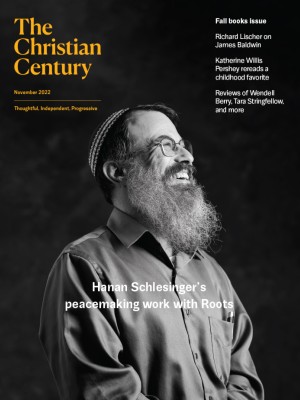The isaiah text for this week lays out something of an urban design plan: homes, food, jobs, fair labor, no infant mortality, and a generous life expectancy. I’d like to live there.
In some ways I do. Life expectancy, literacy, and standards of living are at an all-time high worldwide. Hunger, child mortality, and extreme poverty have declined.
But it doesn’t feel like things are better than ever, at least not in my day-to-day reality. This is probably partly why this passage is so evergreen and has spoken to so many generations. Day-to-day things can feel frightening and disappointing.
To some extent that is because of where I live: on the earth that is warming, in a country where the national political climate has become so bitter, and in one of the most segregated metropolitan areas of that country. Much has been written about the tale of two Chicagos, in which income, life expectancy, homeownership, home value, and education vary dramatically. I live and work in White Chicago, as have generations of my family. And I serve in a denomination that has historically been the church of crown and colonialism.
Read our latest issue or browse back issues.
It can feel intractable. Isaiah, however, promises a new heaven and a new earth, so from where may we find hope? For that is what our Gospel text calls us to do, to testify and speak of where we might hope in Jesus and the resurrection even as empires may fall around us, including ours.
One place I am finding hope is through the Industrial Areas Foundation, the nation’s largest and longest-standing network of local faith- and community-based organizations. In partnership with our local IAF affiliate, we have been able to work with congregations throughout the Chicago area on common issues. Right now we’re working on alternatives to incarceration for people in mental health crisis (known as crisis stabilization units), gun control, and building homes for homeownership on the South and West Sides of Chicago—the areas that have historically received the least investment. These priorities were developed through listening and relationship building throughout the region for what we can work together on to make Isaiah’s vision a reality.
And the thing is, it’s working. We’ve gotten our local police department to sign onto the Gun Safety Consortium—a group of police departments supporting and testing new safety technology for use on guns and gun locks. Later this year a local mental health provider will open a “living room,” a de-escalation space were people in mental health crisis can receive compassionate care with professional and peer support, whether they walk in themselves or are dropped off by police or others. And we’re well on our way to building 2,000 homes on the Southwest Side, a project on which local communities there have taken the lead. Of course, we’re always inspired by someone else, in our case the incredible Nehemiah Program in New York City.
I find hope, too, in the forests of New England. I spent a decade in the Northeast and always marveled at and luxuriated in their verdant and varied topography. I always assumed they were old. In truth, there is just a smidgen of old-growth forest in New England, up in Maine. The rest of the Northeast was cleared in the 19th century for lumber and farming, and some of it has since grown back. It takes a long, long time for new-growth forests to store the carbon or host the species that old-growth ones do, but still—given time, things can grow back. The land is not so bitter that it cannot grow healthy forests and communities.
Part of what we are called to as Christians is hope in the unseen. Empires have risen and fallen many, many times before the days in which we walk the earth. God is already creating a new heaven and earth in our midst, and we are called to be part of it.





